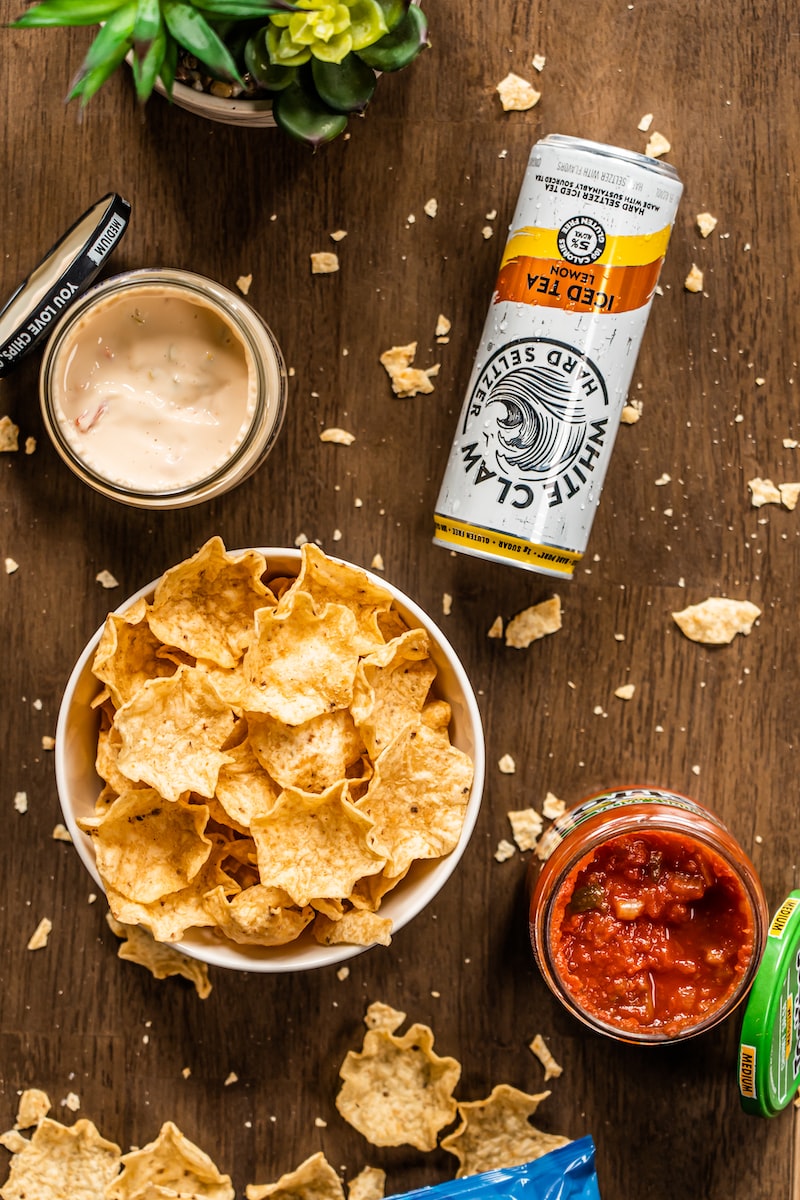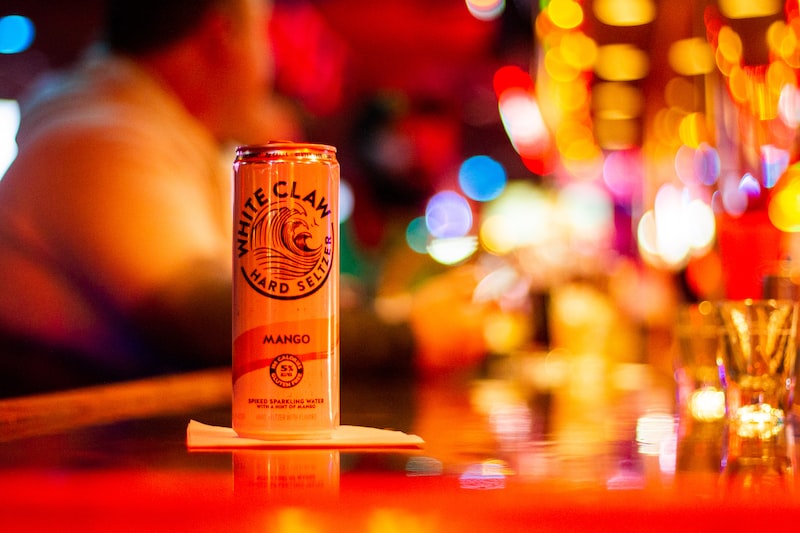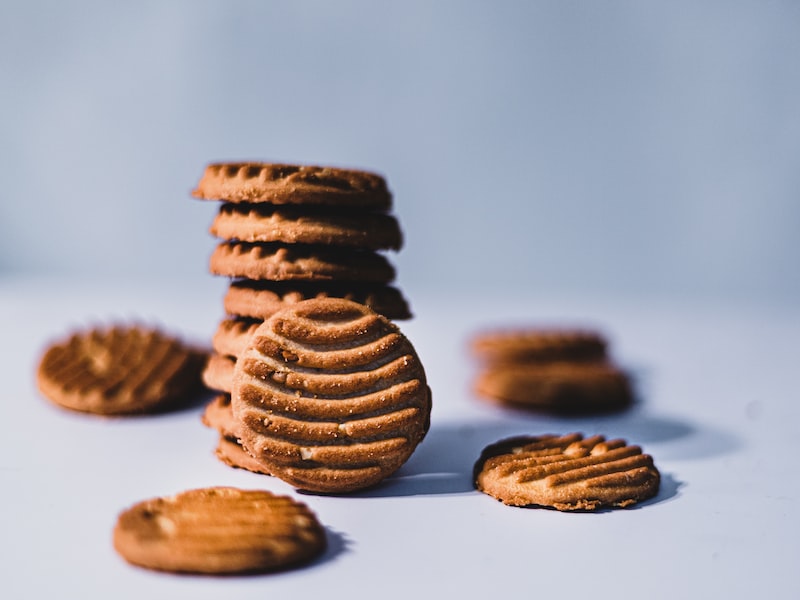Table of Contents

Picture this: it’s a scorching summer day, and you’re in desperate need of a refreshing beverage. You reach for a White Claw pack, an iconic brand known for its sparkling hard seltzers. But have you ever wondered about the economics behind these delightful beverages?

The cost of a White Claw pack can vary depending on several factors. One crucial element is the size of the pack itself. Generally, a standard pack contains 12 cans, each with a volume of 355 milliliters (or 12 fluid ounces). However, alternative pack sizes, such as six-packs or variety packs, may also be available, catering to different preferences and needs.
Another factor impacting the cost is the specific flavor or variety of White Claw you choose. With an array of flavors like black cherry, mango, or lime, there’s something for everyone. Some variations might be more popular and demand a higher price, while others could be on sale or limited edition, offering a more affordable option.
But what about production costs? To bring you that crisp, bubbly goodness, White Claw undergoes a meticulous manufacturing process. From sourcing quality ingredients to ensuring consistent taste and product safety, these steps incur expenses that contribute to the final price tag.
Furthermore, market competition plays a significant role in determining the cost. When multiple brands offer similar products, they strive to attract customers through competitive pricing strategies. So, keep an eye out for promotions, discounts, or seasonal deals that could make your White Claw pack even more enticing.
Now that we’ve delved into the refreshing world of economics surrounding the cost of a White Claw pack, you can appreciate the value behind your favorite summer libation. So, next time you crack open a can and savor the effervescent flavors, remember the intricate web of factors that make it all possible. Cheers to enjoying life’s simple pleasures with a refreshing twist!
The Rise of White Claw: Unveiling the Economics Behind Its Refreshing Success
White Claw has taken the beverage industry by
storm, captivating the taste buds and wallets of consumers across the globe. But what exactly is behind the astonishing success of this refreshing drink? Let’s dive deep into the intriguing economics that have propelled White Claw to new heights.One of the key factors contributing to White Claw’s rise is its impeccable timing. The hard seltzer market was relatively untapped when White Claw burst onto the scene, presenting a golden opportunity for the brand. Capitalizing on the increasing demand for healthier, low-calorie alternatives to traditional alcoholic beverages, White Claw positioned itself as the go-to option for fitness-conscious individuals and those seeking a lighter drinking experience.
Moreover, White Claw masterfully tapped into the power of social media and influencer marketing. By strategically partnering with popular personalities who aligned with their target demographic, they generated substantial buzz and created a sense of FOMO (fear of missing out) among consumers. This, coupled with eye-catching visuals and relatable content, helped White Claw establish a strong online presence and connect with their audience in a meaningful way.
Another crucial aspect of White Claw’s success lies in its branding and packaging. The iconic slim cans adorned with vibrant colors and simple yet bold typography instantly catch the eye and evoke a sense of modernity and sophistication. Furthermore, the brand’s tagline “Made Pure” resonates with health-conscious consumers, emphasizing the use of natural ingredients and no artificial sweeteners.
In terms of pricing, White Claw adopted a strategy that allowed them to position themselves as a premium product without alienating potential customers. By setting their prices slightly higher than other alcoholic beverages but still within a reasonable range, they conveyed an image of quality and exclusivity while remaining accessible to the average consumer.
Additionally, the convenience factor played a significant role in White Claw’s triumph. The ready-to-drink nature of their product eliminated the need for mixing or additional ingredients, appealing to consumers who valued simplicity and time-saving solutions.
the rise of White Claw can be attributed to a combination of factors. From capitalizing on market trends and leveraging social media influence to crafting a strong brand identity and ensuring convenience, the economics behind its success are intricately woven. As the demand for healthier alcoholic alternatives continues to grow, White Claw has carved out a refreshing niche for itself, leaving an indelible mark on the beverage industry.
Crunching the Numbers: How Much Does a White Claw Pack Really Cost?

Are you curious about the true cost of enjoying a refreshing White Claw pack? Let’s dive into the numbers and crunch the figures to reveal the real price behind this popular alcoholic beverage.
When it comes to purchasing your favorite White Claw, the first thing to consider is the pack size. Typically, these fizzy drinks come in packs of 12 cans. But how much will that set you back?
On average, a 12-pack of White Claw costs around $15 to $20, depending on where you buy it. Let’s break it down further. If we assume each can contains 355 milliliters (ml) of liquid, a single can costs roughly $1.25 to $1.67. Keep in mind that prices may vary based on location and any ongoing promotions.
Now, let’s compare this cost to other alcoholic beverages. A 750 ml bottle of vodka, for instance, can range from $15 to $20. With the recommended serving size of 44 ml per drink, you can make approximately 17 cocktails from one bottle. This breaks down to around $0.88 to $1.18 per cocktail.
In contrast, a 12-pack of White Claw offers convenience as each can is pre-portioned with a standard serving size of 355 ml. This eliminates the need for measuring and mixing, making it a hassle-free option for many individuals.
Additionally, White Claw’s popularity stems from its low-calorie content and refreshing flavors. Each can typically contains 100 calories, making it an appealing choice for those conscious of their calorie intake.
So, while a 12-pack of White Claw might seem slightly pricier than other alcoholic beverages, it offers convenience, pre-portioned servings, and a low-calorie option all in one package. Ultimately, the value lies in the individual’s preferences and priorities when it comes to taste, convenience, and overall drinking experience.
Now that we’ve crunched the numbers, you can make an informed decision about whether the cost of a White Claw pack aligns with your budget and preferences. Cheers to enjoying your favorite fizzy drink responsibly!
From Brewing to Buying: Analyzing the Economic Lifecycle of a White Claw Pack
Have you ever wondered about the journey of a refreshing White Claw pack, from its inception at the brewery to the moment it reaches your hands? In this article, we will dive into the fascinating economic lifecycle of a White Claw pack, exploring the intricate processes and factors that contribute to its creation and availability.
At the heart of this lifecycle lies the brewing process. Skilled brewers meticulously craft each White Claw flavor using a unique blend of purified seltzer water, gluten-free alcohol, and a hint of natural fruit flavors. This careful blending results in the crisp and refreshing taste that has captivated millions of consumers worldwide.
Once the production process is complete, the White Claw packs embark on their journey through the distribution network. From the brewery, the packs are transported to regional distribution centers, where they are then dispersed to local retailers. This intricate logistics network ensures that White Claw enthusiasts can find their favorite drink conveniently, no matter where they are.
But what drives the demand for White Claw? The popularity of hard seltzers in recent years has skyrocketed due to their low calorie, low sugar content, and refreshing nature. Consumers seeking a lighter alternative to traditional alcoholic beverages have found solace in the effervescence of White Claw. Its rise to prominence can be attributed to effective marketing campaigns, social media influence, and the increasing health-consciousness of modern-day consumers.
As demand surges, so does the need for raw materials. The economic lifecycle of a White Claw pack involves sourcing ingredients such as seltzer water, alcohol, and natural fruit flavors. These raw materials require careful procurement and management to ensure a steady supply chain that meets the demands of an ever-growing market.
Finally, the White Claw packs arrive at retail stores, ready to be purchased by eager customers. Their vibrant packaging and enticing array of flavors make them stand out on the shelves, beckoning consumers to indulge in their refreshing taste. Through smart branding and strategic placement, White Claw has managed to create a powerful connection with its target audience.
the economic lifecycle of a White Claw pack is a complex and fascinating journey that begins with expert brewing and culminates in the hands of satisfied customers. From the careful selection of ingredients to the efficient distribution network, every step plays a vital role in bringing this popular alcoholic beverage to your fingertips. So, the next time you crack open a can of White Claw, take a moment to appreciate the intricate web of processes and factors that made it all possible.
Demand vs. Supply: Exploring the Economic Forces Fueling White Claw’s Pricing

Have you ever wondered why White Claw, the popular hard seltzer brand, seems to have a higher price compared to other alcoholic beverages? The answer lies in the fascinating interplay between demand and supply, two fundamental economic forces that shape pricing strategies. In this article, we will explore how these forces contribute to the pricing dynamics of White Claw.
Let’s start by examining the demand side of the equation. White Claw has experienced an unprecedented surge in popularity over recent years, capturing the attention and taste buds of millennials and Gen Z consumers. This explosive demand can be attributed to several factors. Firstly, White Claw offers a refreshing and low-calorie alternative to traditional alcoholic beverages. Its crisp flavors and light carbonation appeal to health-conscious individuals seeking a guilt-free indulgence. Secondly, the brand has successfully cultivated a vibrant lifestyle image through strategic marketing campaigns and social media presence, fueling its desirability among the target audience.
As demand skyrockets, the supply side faces its own challenges. Producing a product at such a large scale requires meticulous planning and resources. White Claw’s parent company, Mark Anthony Brands, has invested heavily in expanding production capacity to keep up with the soaring demand. However, meeting the exponential growth remains a daunting task, often leading to shortages in certain markets. This limited availability further intensifies the allure of White Claw, driving up prices due to scarcity.
Another critical factor affecting White Claw’s pricing is the cost structure associated with production. The brand utilizes high-quality ingredients and a meticulous brewing process to ensure consistent taste and quality. Moreover, the use of natural flavors and real fruit extracts adds to the overall production costs. These premium inputs, combined with the need for specialized equipment and packaging, contribute to the higher price point of White Claw in comparison to its competitors.
the pricing of White Claw can be attributed to the delicate balance between surging demand and the challenges of supply. Its popularity among health-conscious consumers, coupled with limited availability and higher production costs, have created a pricing landscape that distinguishes White Claw from other alcoholic beverages. So, the next time you reach for a can of this effervescent hard seltzer, remember the economic forces at play behind its tantalizing price tag.





